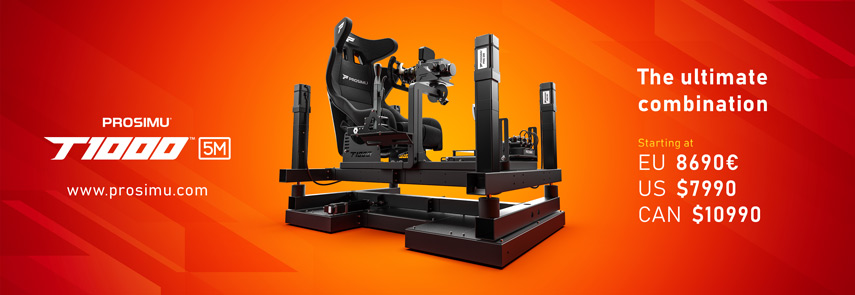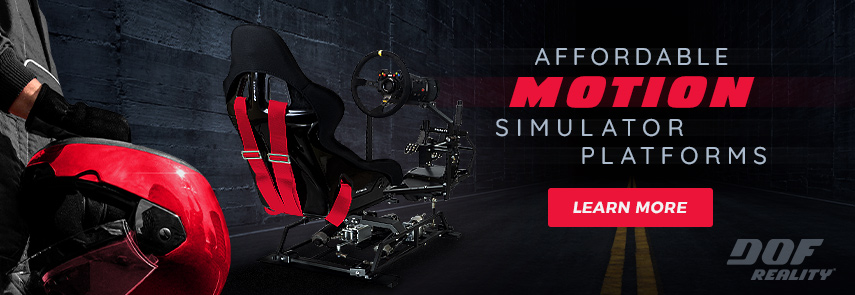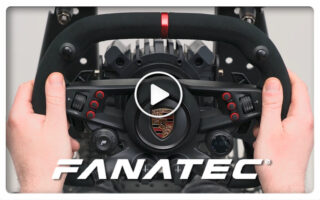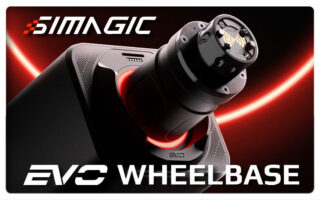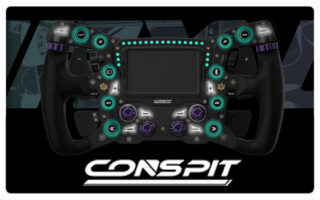Leo Bodnar Sim Steering 2 System Review by The Simpit
Shaun Cole of “The Simpit” is reviewing the the Leo Bodnar Sim Steering 2 system.
The Bodnar Force Feedback wheel for the professional simulation market was first designed in 2009 and is already used by various professional drivers and racing training centers. The Bodnar wheel is powered by a high precision and very strong servo motor that produces 16Nm Torque and is known for its very accurate and direct force feedback.
During the review, Shaun puts the Sim Steering System (Model 53) trough it’s paces. He talks about the origins of the Direct Drive wheel and takes an in-depth look at the various components it features. After discussing the installation and setup of the product, Shaun gets behind the Bodnar wheel to test the unit with a variety of sim racing titles.
| visit the official web page at simsteering.com |
Product Description
SimSteering2 is a high-performance steering system for professional use. Developed over a period of years, the high precision and completely linear response, coupled with high strength provides the ultimate in realistic steering force feedback for all types of driving.
Typical applications of the steering system include:
- Race car training simulators
- Road car and HGV training
- Public display simulators (such as static F1 show cars etc)
This system is used by many teams participating in race series including F1, GP2, F3, LMP1, LMP2 and WTCC.
- PC connection is through USB and is detected by Windows as a generic gaming device so no drivers or plugins are required. Compatible with directX allowing excellent compatibility with current and future simulation software. Will work with any game that offers force feedback.
- Tested on rFactor 1&2, Assetto Corsa, iRacing, DiRT 1,2&3, F1 2010 – 2013, P. C.A.R.S, all SimBin titles, Richard Burns Rally plus many more.
- Modular system that allows you to connect the majority of standard motorsport steering wheels or adapt to fit your own steering column. We also have a range of our own simulator steering wheels. Steering wheels do not electronically connect to the SimSteering system and are connected to the PC separately. Pedals are also treated as separate devices.
- The motor and control box are connected (as standard) by two, two meter cables which gives great flexibility for mounting solutions. Typically the motor is mounted inside or at the end of a cockpit and connected to a steering column. Desktop motor mounting solutions and options for direct wheel connection to the shaft are shown further down the page.
- Powered by regular mains power – 100 to 240V (AC)
- Alternative steering motors for higher or lower torque levels and custom cable lengths are also available.
- A 3D model of the motor is available on the Downloads page to assist you with your own mounting solution.
Improvements over the previous version
- New inertia and friction settings for more natural and realistic feeling. This allows the user to simulate parts of a vehicle that have not been possible before and cannot be simulated in software properly.
- Improved damping
- Smoother feel
- Absolute position pickup when powered on
Standard Kit Components
|
Dimensions
|
 Bsimracing Sim Racing Resources and News for the racing enthousiast.
Bsimracing Sim Racing Resources and News for the racing enthousiast.


